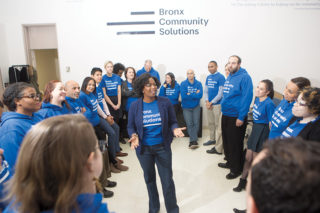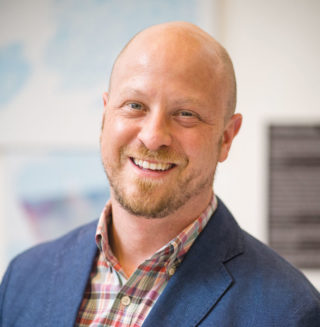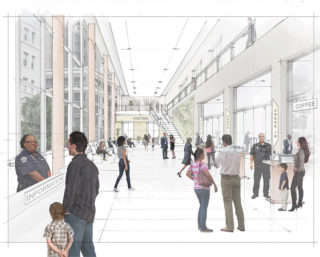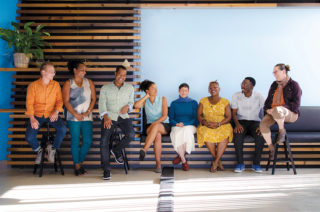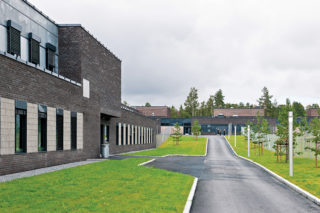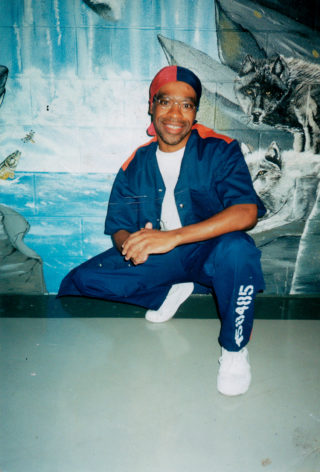Dear Editor,
The visual op-ed by Garo Gumusyan in the Fall 2020 issue of Oculus, “Bring Fútbol to the Skyline and Green Spaces to Uptown“, misrepresents accessibility considerations on Randall’s Island.
For 20 years, my firm has been involved with the redevelopment of the public park on the island. In that time, working with many other dedicated design professionals in collaboration with the NYC Parks Department, the NYC Economic Development Corporation, the Randall’s Island Park Alliance, and community stakeholders, we have helped redevelop the island into the premier destination for sports and recreation in the city, while restoring its natural environment, including shoreline and wetlands. The result of this prolonged effort is that the island is now rightfully considered an important public-private model for the revitalization of large public spaces. The article, however, completely disregards the long-term, whole-scale transformation that has been ongoing for two decades. The author has constructed an alternate reality where needs such as waterfront development, park accessibility, and social equity have “gone puzzlingly unaddressed.” As an architect intimately involved in master planning for Randall’s Island from the beginning of this project, and as a Latino and an immigrant, I am offended by this writer’s mischaracterization.
The claim that the fields and facilities “are used disproportionately by private-school students” is misleading. Of the 11,000 hours of annual playing time, about half go to public schools and community groups, with the remainder going to private and parochial schools. Free public programming and environmental field trips serve over 8,000 student a year, 85% from public schools in East Harlem and the South Bronx. Sportime, the operator of the tennis center, has also heavily focused outreach efforts on East Harlem and the South Bronx, providing over 15,000 hours of free school-based and local community-based organizations with tennis instruction to more than 5,000 youths from the two communities. The result of these efforts is that the island is hardly the enclave for the privileged that the writer describes.
The Icahn Stadium site is described as “currently dominated by vehicle parking,” which is false. More egregiously, the writer contends that Icahn Stadium is expendable because it “differs little from running tracks found at numerous sites throughout the city.” In fact, designed for premier outdoor track and field events, Icahn Stadium is one of only seven International Association of Athletics Federation’s World Athletics-certified facilities in the U.S. It is the only facility in the Northeast with this designation. More importantly, it may be the only one also designed as a community hub used on a daily basis by local school groups from the surrounding neighborhoods, giving aspiring young track and field athletes a world-class training venue.
Though the writer’s love of soccer is clear, the vision for a professional soccer stadium and its associated cable-stay bridge on the island would be catastrophic to the ecosystem that was so carefully restored as part of the park now enjoyed by so many. That this speculative proposal appears in an issue titled “Climate Change + Social Justice” is both ironic and tragic.
Sincerely,
Ricardo Zurita, AIA, LEED AP
Principal, Ricardo Zurita Architecture & Planning, PC
Read Garo Gumusyan’s response to this letter here >
Editor’s Note: This letter is an online exclusive that did not appear in the Winter 2021 print edition of Oculus










